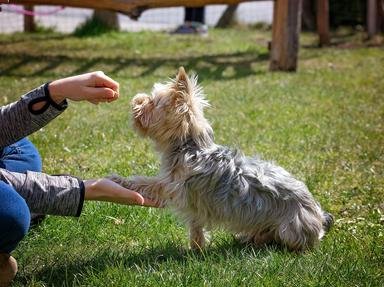Quiz Answer Key and Fun Facts
1. Where was the first widely documented dog agility exhibition?
2. What sport was the inspiration for dog agility?
3. What was the inspiration for the weave poles?
4. Which of the following is a good reason for participating in dog agility?
5. Which of the following is allowed in the ring?
6. Which of the following games is both the name and inspiration for a titling class in multiple dog agility venues in the USA?
7. Which is NOT a fault in dog agility?
8. Each course is always different. Which of the following describes how handlers familiarize themselves with a particular course?
9. In which of the following dogs sports can an inspiration for the A-frame be found?
10. Which is NOT a main principle that guided the development of dog agility?
Source: Author
toughynutter
This quiz was reviewed by FunTrivia editor
crisw before going online.
Any errors found in FunTrivia content are routinely corrected through our feedback system.
